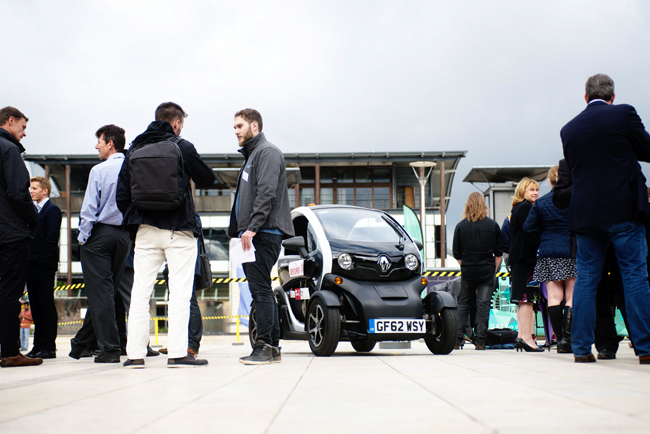International automotive supplier Continental has called for a market-based adaptation of the legal framework for automated driving, saying its Mobility Study 2013 has shown that motorists worldwide want automated driving on the freeway.
“Their needs match up perfectly with the development possibilities in the upcoming years. However, the necessary adjustments to the traffic regulatory framework must not fail to take into account the connection with these market dynamics," said Continental head of resear
International automotive supplier 260 Continental has called for a market-based adaptation of the legal framework for automated driving, saying its Mobility Study 2013 has shown that motorists worldwide want automated driving on the freeway.
“Their needs match up perfectly with the development possibilities in the upcoming years. However, the necessary adjustments to the traffic regulatory framework must not fail to take into account the connection with these market dynamics," said Continental head of research for automotive electronics, Christian Senger, during the Zulieferer Innovativ 2014 Congress at1731 BMW Welt in Munich.
"Initial success in this regard was seen with the recent modification of the Vienna Convention, which established the legal foundations for partially automated driving. But we are still a long way away from highly automated driving from a traffic regulatory perspective," said Senger, commenting on the current legal situation. According to Senger, legislators should address the basic policy decisions now so that motorists will be able to make use of highly automated driving functions post 2020.
"Legislation should continue to play a role in the timing, paving the way toward fewer accidents, enhanced energy efficiency, and greater driving comfort. This would bring it in line with the needs of motorists worldwide," said Senger.
Article 8 of the 1968 Vienna Convention on Road Traffic specifies that the driver must maintain permanent control of the vehicle. This limitation was amended, however, in March 2014 in response to the increasing automation of vehicle systems. Automated systems are now permitted as long as they can be overridden or deactivated by the driver. This has established the legal foundation for partially automated driving since control of the vehicle may now essentially be assumed by systems as well.
However, not all countries have ratified the Convention. In addition to Germany and most EU Member States, the other principal signatories include Russia, Brazil, South Africa, Switzerland, and Turkey. By contrast, countries that have not yet ratified the Convention include England, Spain, the U.S.A., Canada, Mexico, China, Japan, Korea, India, Australia, and Singapore.
A critical hurdle along the path to highly automated driving is laid down in a UN/ECE regulation (UN-R 79: Uniform Provisions Concerning the Approval of Vehicles with regard to Steering Equipment). According to this regulation, automated steering is currently only permitted up to a speed of as high as 10 km/h. In order to make highly automated driving functions such as traffic jam assist or emergency steer assist a reality, Continental claims this speed limitation needs to be lifted.
“Their needs match up perfectly with the development possibilities in the upcoming years. However, the necessary adjustments to the traffic regulatory framework must not fail to take into account the connection with these market dynamics," said Continental head of research for automotive electronics, Christian Senger, during the Zulieferer Innovativ 2014 Congress at
"Initial success in this regard was seen with the recent modification of the Vienna Convention, which established the legal foundations for partially automated driving. But we are still a long way away from highly automated driving from a traffic regulatory perspective," said Senger, commenting on the current legal situation. According to Senger, legislators should address the basic policy decisions now so that motorists will be able to make use of highly automated driving functions post 2020.
"Legislation should continue to play a role in the timing, paving the way toward fewer accidents, enhanced energy efficiency, and greater driving comfort. This would bring it in line with the needs of motorists worldwide," said Senger.
Article 8 of the 1968 Vienna Convention on Road Traffic specifies that the driver must maintain permanent control of the vehicle. This limitation was amended, however, in March 2014 in response to the increasing automation of vehicle systems. Automated systems are now permitted as long as they can be overridden or deactivated by the driver. This has established the legal foundation for partially automated driving since control of the vehicle may now essentially be assumed by systems as well.
However, not all countries have ratified the Convention. In addition to Germany and most EU Member States, the other principal signatories include Russia, Brazil, South Africa, Switzerland, and Turkey. By contrast, countries that have not yet ratified the Convention include England, Spain, the U.S.A., Canada, Mexico, China, Japan, Korea, India, Australia, and Singapore.
A critical hurdle along the path to highly automated driving is laid down in a UN/ECE regulation (UN-R 79: Uniform Provisions Concerning the Approval of Vehicles with regard to Steering Equipment). According to this regulation, automated steering is currently only permitted up to a speed of as high as 10 km/h. In order to make highly automated driving functions such as traffic jam assist or emergency steer assist a reality, Continental claims this speed limitation needs to be lifted.










